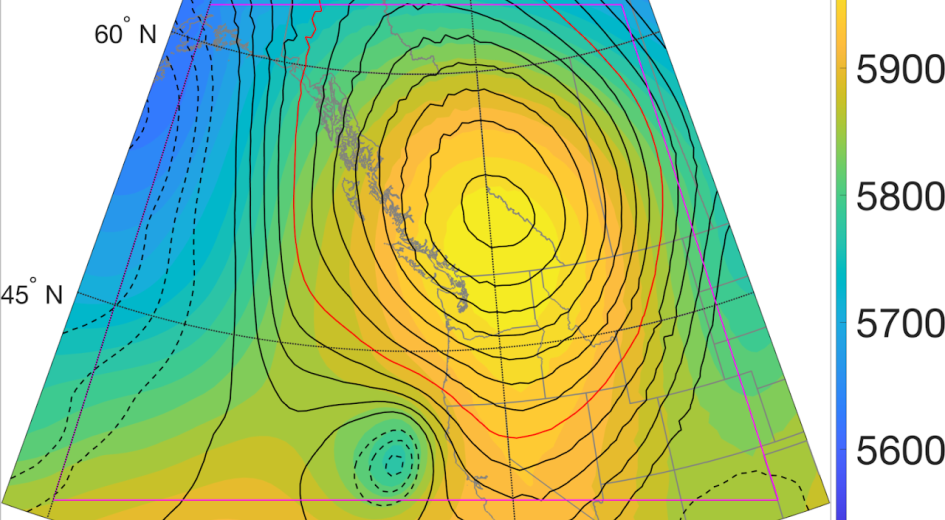Last year’s record-breaking heatwave, the latest droughts, and the 2020 Labor Day megafires that spread across Oregon and Washington all have one thing in common: atmospheric ridges, or extended regions of high pressure relative to their surrounding environments that are generally associated with hot and temperate surface conditions.
 Depiction of the ridge associated with the June 2021 record-shattering heatwave over the Pacific Northwest. Image Credit: Paul Loikith
Depiction of the ridge associated with the June 2021 record-shattering heatwave over the Pacific Northwest. Image Credit: Paul Loikith
Further research is needed to understand the primary factors of ridges and how they will be impacted by climate change. That is why, thanks to a National Science Foundation grant, scientists from Portland State University (PSU) and Washington State University Vancouver (WSUV) are collaborating to study atmospheric ridging in ongoing and prospective climates.
While ridges are a regular part of mid-latitude atmospheric circulation, their emergence and effects over western North America are shaped by a multitude of independent variables, according to Paul Loikith, associate professor of geography and director of PSU’s Climate Science Lab, and Deepti Singh, an assistant professor at WSUV and director of WSUV’s Climate Extremes and Societal Impacts Lab.
The project’s goal is to improve basic understanding of the components of the Earth system that influence atmospheric ridges over western North America, as well as to explore how and why ridges will react to ongoing global warming. Using a mixture of observational data and climate model simulations, the project will seek to address three basic questions:
- How do possible future variations in ridge characteristics interrelate with warming to influence surface climate and extremes of temperature and precipitation in the region?
- How do different atmosphere, ocean, and land-surface conditions impact features of atmospheric ridges like their extent, frequency, persistence, and amplitude?
- How are expected changes in ridge characteristics influenced by changes in these physical drivers?
The results of the study will aid in climate adaptation and planning. Loikith and Singh discovered in their latest study published in the Journal of Climate that ridges that cause heat waves will not inevitably become more prevalent over the Pacific Northwest in the coming years, but when they do happen, the weather associated with them will be warmer in the long term than in the olden days.
As part of this grant, the team will also collaborate with the Oregon Museum of Science and Industry to create education and awareness activities and materials for K-12 and community groups in the Portland-Vancouver area to highlight these atmospheric characteristics and their impacts on the environment.